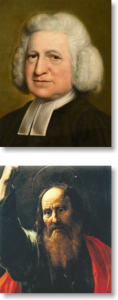
Charles Wesley and St. Paul
I wrote this poem with two passages in mind, one from Paul’s letter to the Philippians and the other from a hymn that Charles Wesley wrote. The passage from Paul is the great Carmen Christi (Song of Christ) found in the second chapter. Many scholars believe that Paul is quoting a hymn which the earliest churches sang in their meetings. In the process of encouraging the kind of humility he wanted the Philippians to follow, he refers to the Prime Example. Their attitude should be the same as Jesus Christ,
who, though he was in the form of God,
did not regard equality with God
as something to be exploited,
but emptied himself,
taking the form of a slave,
being born in human likeness.
And being found in human form… (Philippians 2:6-7, NRSV)
Charles Wesley wrote thousands of hymns, some of which we still sing today. I think his theology is deeper than his brother John’s. John was practical and pastoral in his theology and teaching. But Charles dealt with deep matters that could furnish the text for worship, adoration and thanksgiving. In this case, the third stanza of his hymn, “And Can It Be?” came to mind when I was writing my poem.
He left His Father’s throne above, So free, so infinite His grace;
Emptied Himself of all but love, And bled for Adam’s helpless race;
‘Tis mercy all, immense and free; For, O my God, it found out me.
The question is: if the Son of God emptied himself to become a human being, what was left? And the answer is: his identity—he is who he is. He was born with a personality just as you and I are. I believe Charles Wesley hit the nail on the head. The Lord emptied himself but what was left was his personality—the personality of God, which is his love. God is love. Jesus was born into this world, the love of God incarnate.



God is love, and whoever abides in love abides in God, and God abides in him. 1 John 4:17